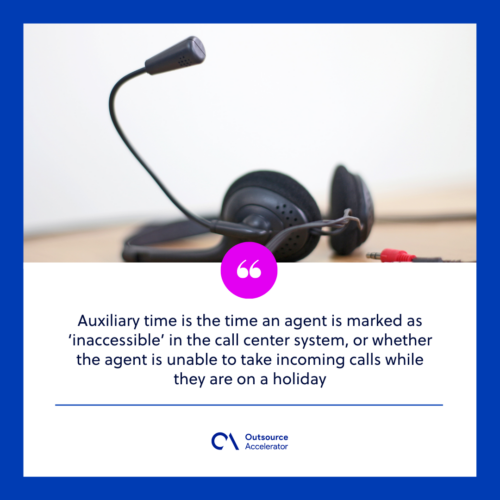Auxiliary (AUX) Time in Percent
Definition
What is auxiliary (AUX) time in percent?
Auxiliary time is the time an agent is marked as ‘inaccessible’ in the call center system, or whether the agent is unable to take incoming calls while they are on a holiday. Its primary function is to control the workload of non-call-related operations. It is crucial for maintaining service levels and maximizing staffing.
The auxiliary time in percent is never an anomaly; they are a programmable and functional business unit. The auxiliary time can be arranged and pre-programmed using WFM to help control agent operations. Compliance with auxiliary time, auxiliary code rules, and standards improve efficiency and agent adherence, as well as the ability to minimize expenses and enhance financial performance.

Three categories of auxiliary time
Auxiliary time is an essential feature that has a significant effect on the hiring activities and service levels of the call center. Regardless of the reason, this ensures that your agents would not receive calls whether they are labeled as a way, or Aux, in most call center networks or ACD systems. Auxiliary time has three common categories:
- Paid unproductive time. Meetings, vacations, teaching, counseling, agent planning, and so on.
- Paid productive time. Time spent on a job, postal mail, correspondence, manual operations, and so on.
Specific unpaid functions. Lunch and breaks, for example, are included in some centers, allowing for WFM adherence calculations.







 Independent
Independent




